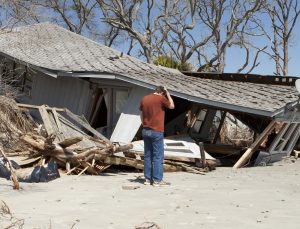 Fannie Mae reported that we've experienced 36 major disasters so far in 2019, and in honor of National Preparedness Month, the GSE met with Alex Amparo, Assistant Administrator of FEMA's National Preparedness Directorate, along with Mike Hernandez, VP for Housing Access and Disaster Response & Rebuild at Fannie Mae, to discuss the importance of preparing for better outcomes.
Fannie Mae reported that we've experienced 36 major disasters so far in 2019, and in honor of National Preparedness Month, the GSE met with Alex Amparo, Assistant Administrator of FEMA's National Preparedness Directorate, along with Mike Hernandez, VP for Housing Access and Disaster Response & Rebuild at Fannie Mae, to discuss the importance of preparing for better outcomes.
Hernandez discussed how homeowners can prepare more than just their homes for a disaster?
"After a disaster, you likely won’t have access to your home – let alone the mortgage and insurance documents you keep in the bottom drawer of your office desk," said Hernandez. "Take pictures of your home and important documents that you may need and keep them on your phone. It’s a step that's often overlooked, but it was critical for me when my home was affected by a fire two years ago. Without those pictures, I would not have the appropriate evidence of loss for insurance purposes."
In a statement, Amparo discussed how homeowners can financially prepare for a disaster, as their place of work could be destroyed in a disaster.
"Being financially prepared is one of the most important things we can do," said Amparo. "To start, keep emergency cash at home to have on hand if you need to leave your home quickly. To stem the impact of lost income, focus on savings. Sticking to a budget can be hard but saving even a small amount from every paycheck can make the difference during recovery."
According to Hernandez, preparing for disaster starts at the building process.
“Preparedness should include far more than financial steps and logistics,” Hernandez said. “A comprehensive plan starts with building for resiliency. We know that not all homes were built with that in mind, and as events like hurricanes test the weather-resistance of housing, our HomeStyle Renovation product helps homeowners finance upgrades and renovations that impact resiliency, including retaining walls to protect from flooding, storm-resistant windows, and roof upgrades.”

 DSNews The homepage of the servicing industry
DSNews The homepage of the servicing industry









